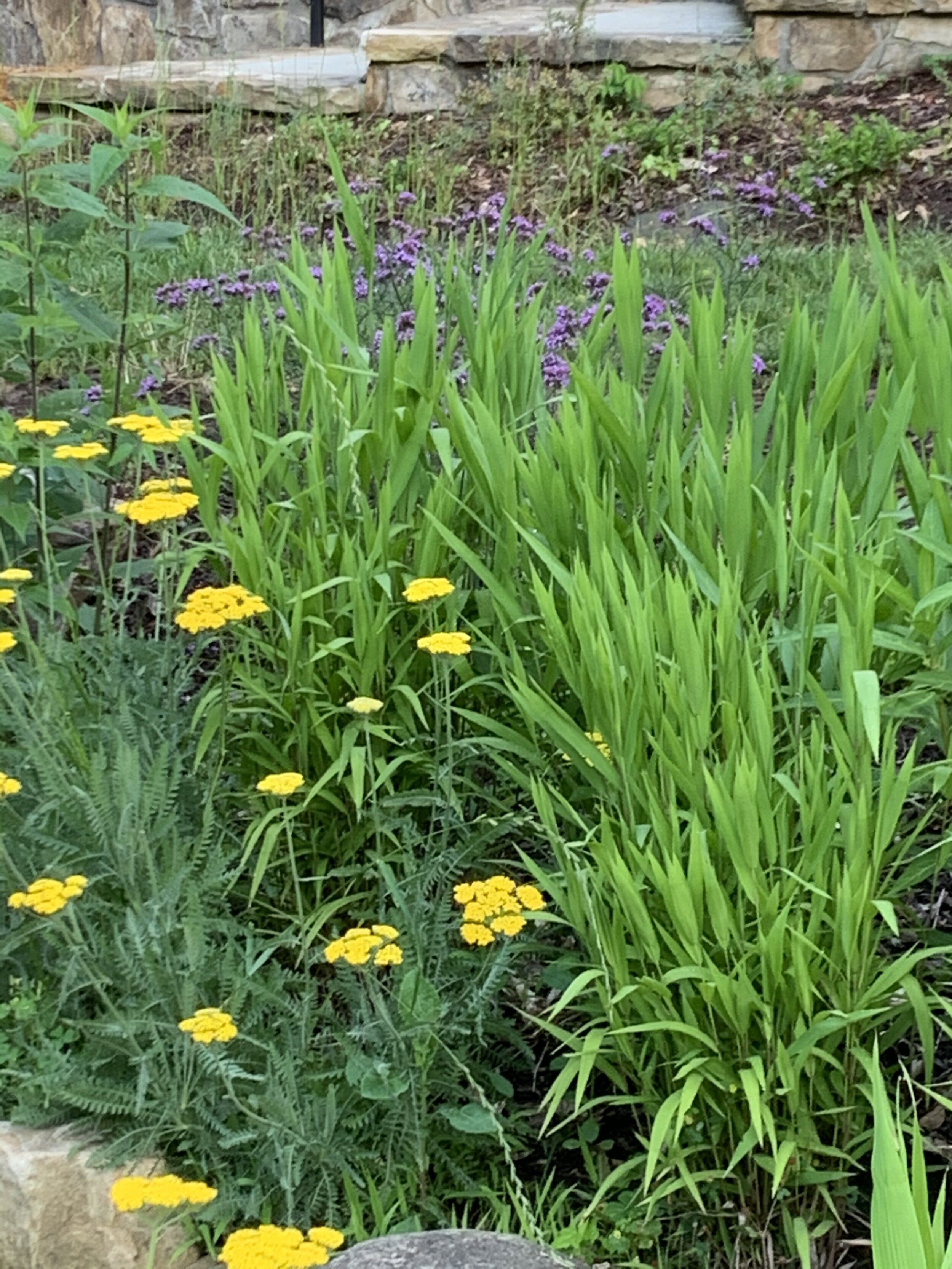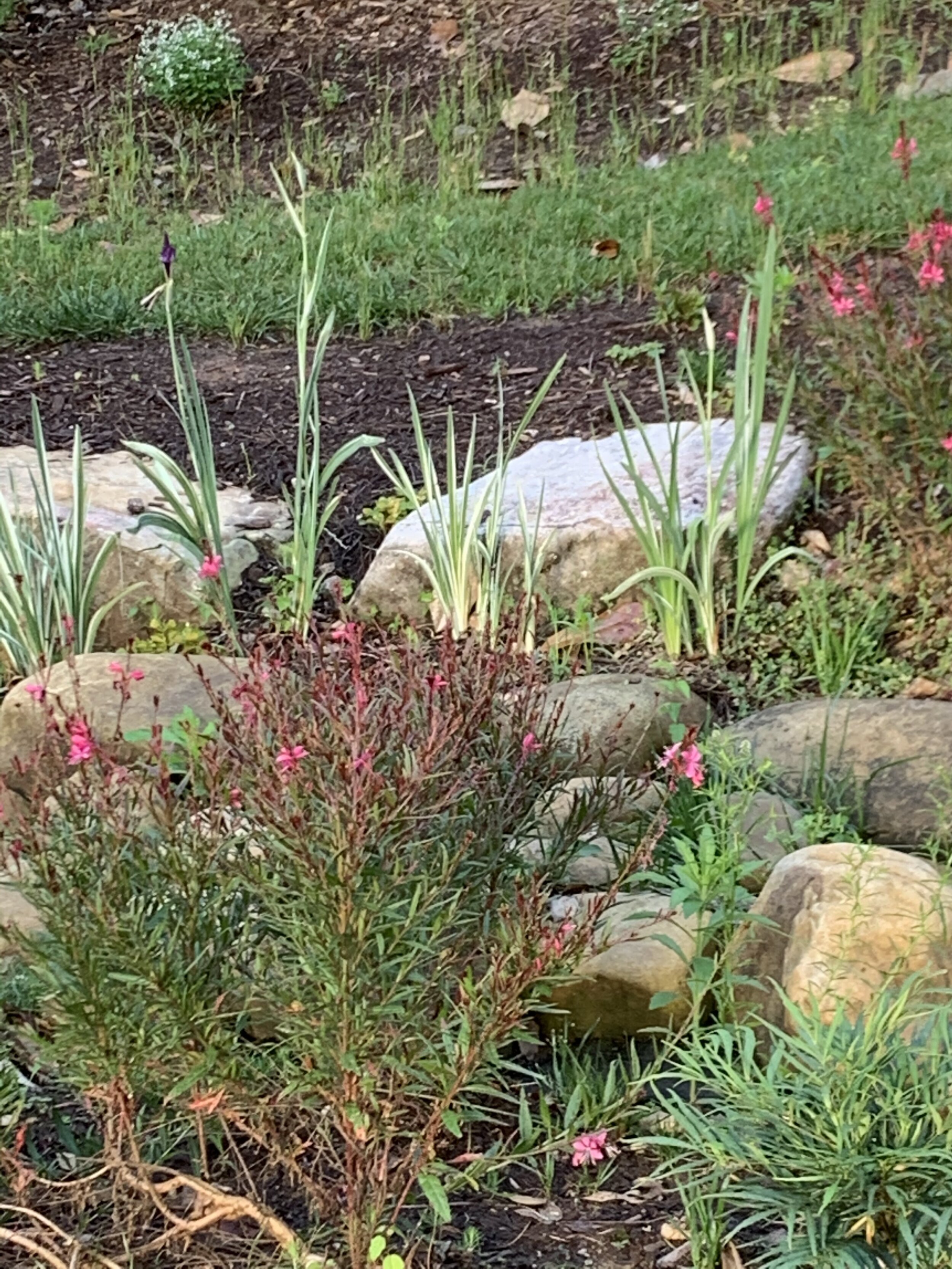By Sally Sears
March 25, 2023
Neighborhood volunteer and members of Emory's Sigma Phi Epsilon fraternity
My hand was inches away from yanking invasive English ivy when I spotted a wandering Emory student. He sauntered along Peavine Trail, staring away from the creek and into the woods. He acknowledged neither my wave or hello at first. But two of his classmates, fraternity men, guessed he most likely was listening to something through his ear buds, Sure enough, he was.
The men from Sigma Phi Epsilon were on a mission, helping to clear the trail of messy invasive plants. Unlike me, they knew that walking students often listen to something through ear buds. Yet it turns out that the newcomer was a student on a mission, too. Nick was hunting mushrooms. Morels, he hoped. He’d already found some oyster mushrooms.
We all livened up at that idea. But then Nick shrugged in apology. “I’m from New Jersey,” he admitted. “I don’t know when things get ripe in Atlanta.”
Maybe we could tell him when he might find some chanterelles? Charmed that he didn’t claim to know everything already, I was happy to suggest that August might be a better time for mushroom foraging, and the woods along the tributaries upstream of Emory were good places to start. Olmsted’s parks on Ponce, particularly Deepdene? He’d never heard of these upstream parks and thanked us as he wandered away.
These trail workdays, including spending time with volunteer Emory undergraduates, feature among the pleasures of living near the South Fork of Peachtree Creek. The two men who guessed at Nick’s ear buds were deep into junior year papers and projects.
As they worked, Ace and Will swapped tales of a physics assignment on electrical conductivity in the lab and a paper due on Ursula K. Le Guin’s novel Dispossessed. I listened as Old Briarcliff Road neighbor Terry Krugman found homes along the rocks at the mouth of the Peavine Rain Garden for sharp spears of wild iris. As the new plants take hold, yellow blooms will feed butterflies. The roots and stems will filter pollutants from the tributary coming downhill from Briarcliff Road and Channel 5. More Emory students worked upstream from the rain garden, along the new loop at the Emory Road trailhead.
They tugged out privet, cleared winter-downed branches, and then discovered the buried pieces of a discarded bathroom, half-hidden in the leaves. Someone careless or just lazy long ago tossed the trash down a hill beside Emory Road at Harvard Road. The students shoved half a dozen wheelbarrow loads of bathtub shards and tile chunks up to Emory Road, where Emory’s Exterior Services Director Jimmy Powell saw to their eventual removal.
Volunteers check out the debris that they removed during the cleanup
The morning’s last best moment was discovered sleeping under a chunk of tile on the forest floor. A beautiful salamander, six inches long, and purple as an eggplant stirred in the leaf litter. We knelt quietly as fraternity member Russell rebuilt its hiding place with leaves and twigs.
Look closely to find the salamander




















